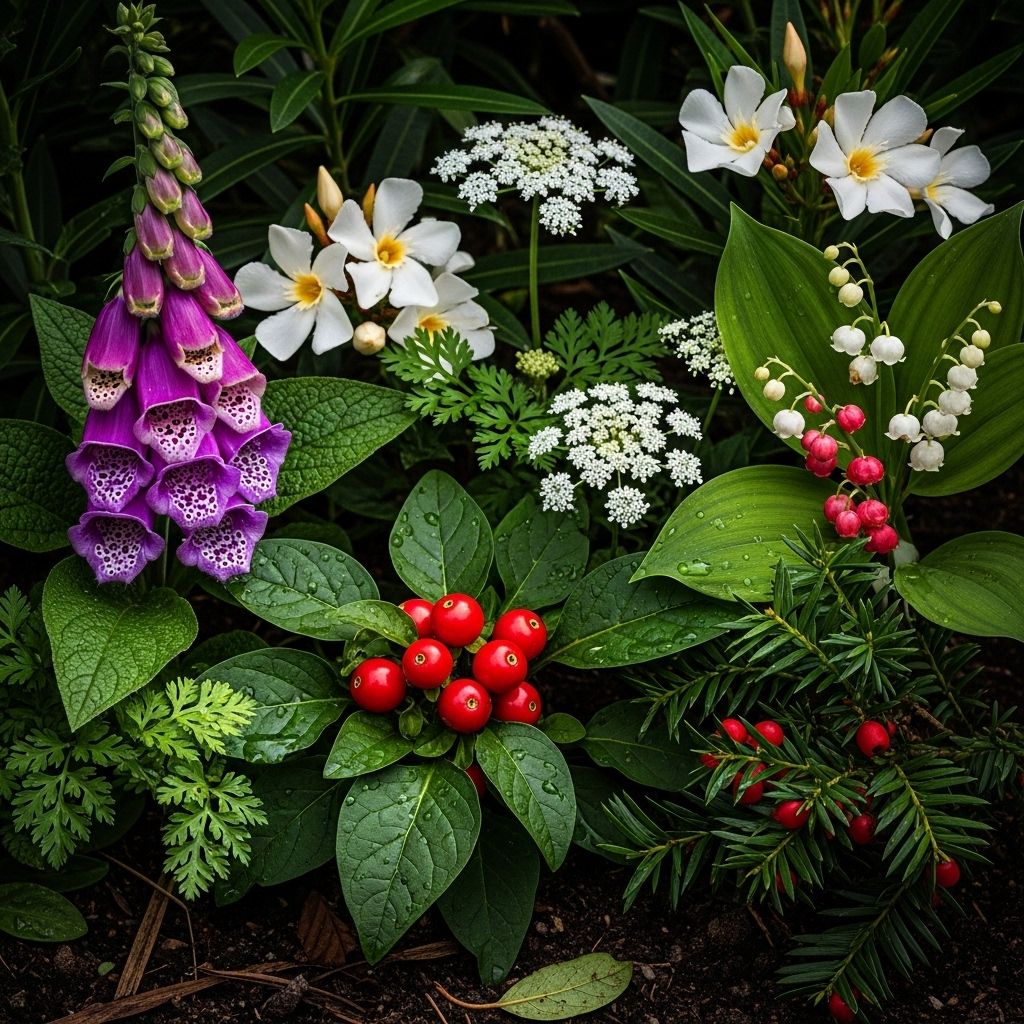Poisonous Garden Plants: 7 Deadly Species And Safety Tips
Know your garden’s hidden dangers—learn about common poisonous plants and how to stay safe

Image: HearthJunction Design Team
Comprehensive Guide to Poisonous Garden Plants
Gardens are sanctuaries of beauty, but they may also harbor hidden dangers. Many common garden plants are toxic to humans and pets, causing anything from mild irritation to severe poisoning. This guide provides an in-depth look at poisonous plants, their identification, symptoms of poisoning, and practical safety tips for gardeners and families.
Why Should You Care About Poisonous Plants?
Understanding poisonous plants is crucial for gardeners, parents, and pet owners. Accidental ingestion or contact can lead to symptoms ranging from mild discomfort to serious health emergencies. By recognizing these plants and knowing how to respond, you can create a safer garden environment.
Common Poisonous Plants and Their Effects
Many ornamental plants are toxic. Below are some of the most common and dangerous species found in gardens:
- Foxglove (Digitalis): All parts are poisonous if ingested. Symptoms include nausea, vomiting, and heart problems.
- Monkshood (Aconitum): Extremely toxic, with ingestion leading to severe neurological and cardiac effects.
- Lily of the Valley (Convallaria majalis): Highly toxic to humans and pets, causing symptoms such as irregular heartbeat and confusion.
- Castor Bean (Ricinus communis): Contains ricin, one of nature’s most potent toxins.
- Oleander (Nerium oleander): All parts are toxic; ingestion can be fatal for both humans and animals.
- Autumn Crocus (Colchicum autumnale): Contains colchicine, which can cause severe gastrointestinal, cardiac, and neurological symptoms.
- English Ivy (Hedera helix): Berries and leaves can cause nausea, abdominal pain, and skin irritation.
Table: Common Poisonous Plants and Their Primary Hazards
| Plant Name | Toxic Parts | Main Symptoms | For Pets |
|---|---|---|---|
| Foxglove | All parts | Nausea, cardiac issues | Yes |
| Monkshood | All parts | Neuro/cardiac effects | Yes |
| Lily of the Valley | All parts | Heartbeat, confusion | Yes |
| Castor Bean | Seeds | Severe poisoning, death | Yes |
| Oleander | All parts | Fatal, heart effects | Yes |
| Autumn Crocus | All parts | GI, cardiac, neuro | Yes |
| English Ivy | Berries, leaves | Nausea, skin irritation | Yes |
Symptoms of Plant Poisoning
Recognizing symptoms quickly can prevent serious complications. Common signs of plant poisoning include:
- Gastrointestinal: Nausea, vomiting, diarrhea
- Cardiac: Irregular heartbeat, low blood pressure
- Neurological: Confusion, seizures, coma
- Skin: Irritation, rash, blisters (from contact)
What to Do in Case of Poisoning
If poisoning is suspected, act quickly:
- Stay calm and assess the situation.
- Identify the plant ingested. If possible, take a sample or photo for medical professionals.
- Call Poison Control or seek emergency medical help. For pets, contact your veterinarian immediately.
- Do not induce vomiting unless instructed. Some toxins can cause more harm if vomited.
Preventive Measures and Safe Gardening Practices
Preventing accidental exposure is the best approach:
- Educate yourself and others about toxic plants in your garden.
- Keep poisonous plants out of reach of children and pets. Consider fencing or elevated planters.
- Wear gloves when handling toxic plants to prevent skin irritation.
- Label plants clearly so everyone knows which are hazardous.
- Supervise children and pets when they are in the garden.
Safe Alternatives to Poisonous Plants
If you’re concerned about toxicity, consider these safe alternatives:
- Roses (except for thorns, edible varieties are non-toxic)
- Marigolds (Calendula): safe for humans and pets
- Snapdragons: non-toxic and colorful
- Sunflowers: safe for everyone
Creating a Poison Garden: Is It a Good Idea?
A poison garden is a themed area devoted to toxic plants. If you choose to create one, follow these guidelines:
- Keep it separate from other garden areas, ideally behind a fence or barrier.
- Label plants clearly as hazardous.
- Restrict access to children and pets.
- Wear protective gear when tending to these plants.
- Never use poisonous plants with malicious intent.
Frequently Asked Questions (FAQs)
Q: What are the most dangerous garden plants for pets?
A: Foxglove, oleander, lily of the valley, castor bean, and autumn crocus are extremely hazardous for pets.
Q: Are all parts of foxglove poisonous?
A: Yes, all parts of foxglove are toxic, including leaves, flowers, seeds, and even water from cut flowers.
Q: What should I do if my child eats a poisonous plant?
A: Seek medical attention immediately and, if possible, identify the plant ingested. Do not induce vomiting unless instructed by a professional.
Q: Can skin contact with poisonous plants be dangerous?
A: Yes, many poisonous plants (e.g., giant hogweed, euphorbias) can cause severe skin irritation or burns. Always wear gloves when handling such plants.
Q: Are there any safe alternatives to toxic ornamental plants?
A: Yes, consider plants like roses, marigolds, snapdragons, and sunflowers, which are generally safe for people and pets.
Conclusion
While many garden plants are beautiful, it’s essential to be aware of their potential dangers. By identifying poisonous plants, understanding symptoms of poisoning, and implementing preventive measures, you can ensure your garden remains a safe and enjoyable space for everyone.
Always research before planting, and when in doubt, consult a local extension service or gardening expert for advice on plant safety in your area.
References
- https://garden-design-courses.co.uk/poisonous-plants/
- https://www.nybg.org/planttalk/comprehensive-guide-to-poisonous-and-injurious-plants-published-by-nybg-and-springer/
- https://mastergardener.osu.edu/sites/mgv/files/imce/Poisonous%20PlantsBenitez.pdf
- https://www.rhs.org.uk/prevention-protection/potentially-harmful-garden-plants
- https://www.gardeningknowhow.com/special/spaces/plants-poison-garden-tips-creating-poison-garden.htm
Read full bio of medha deb












